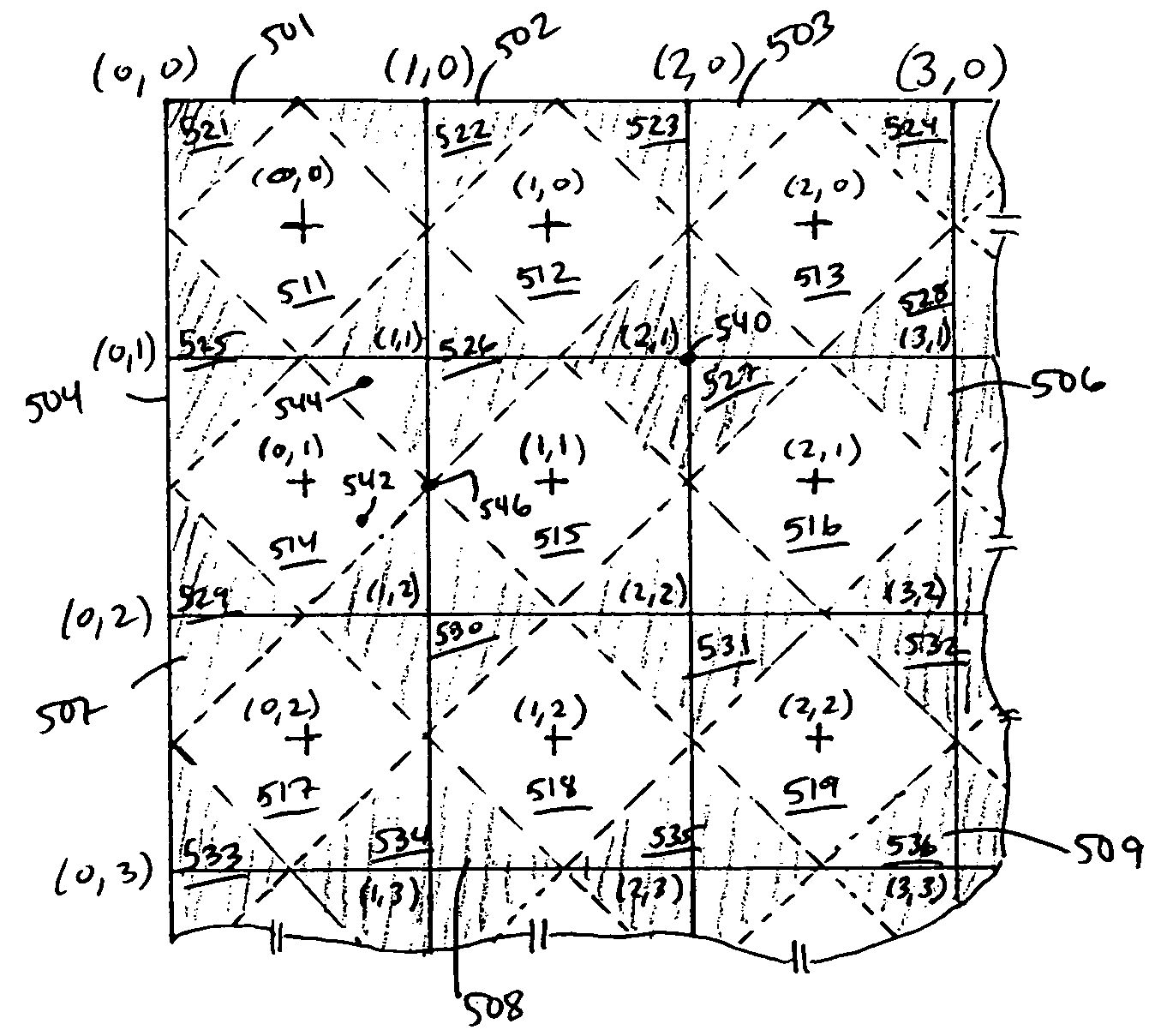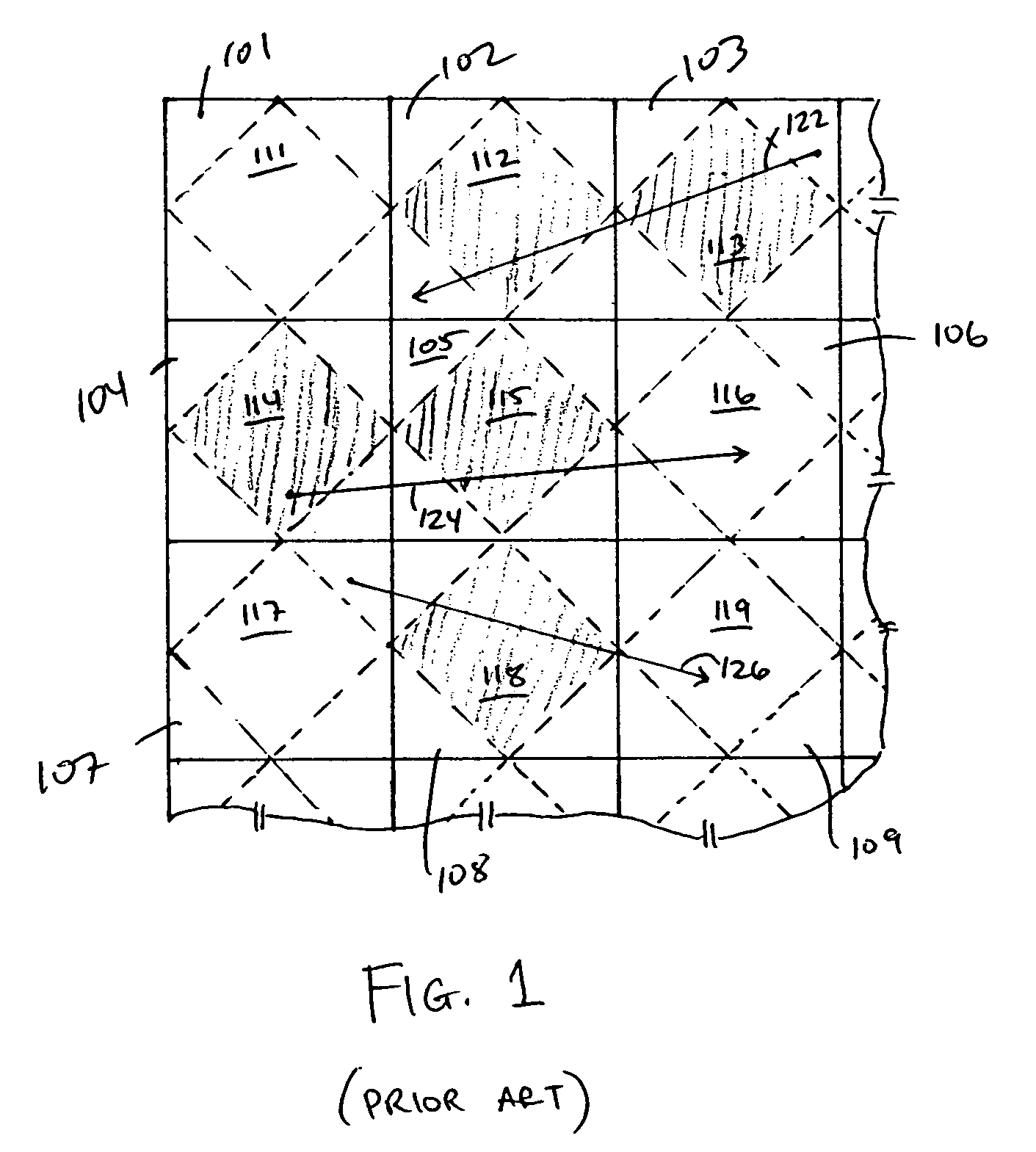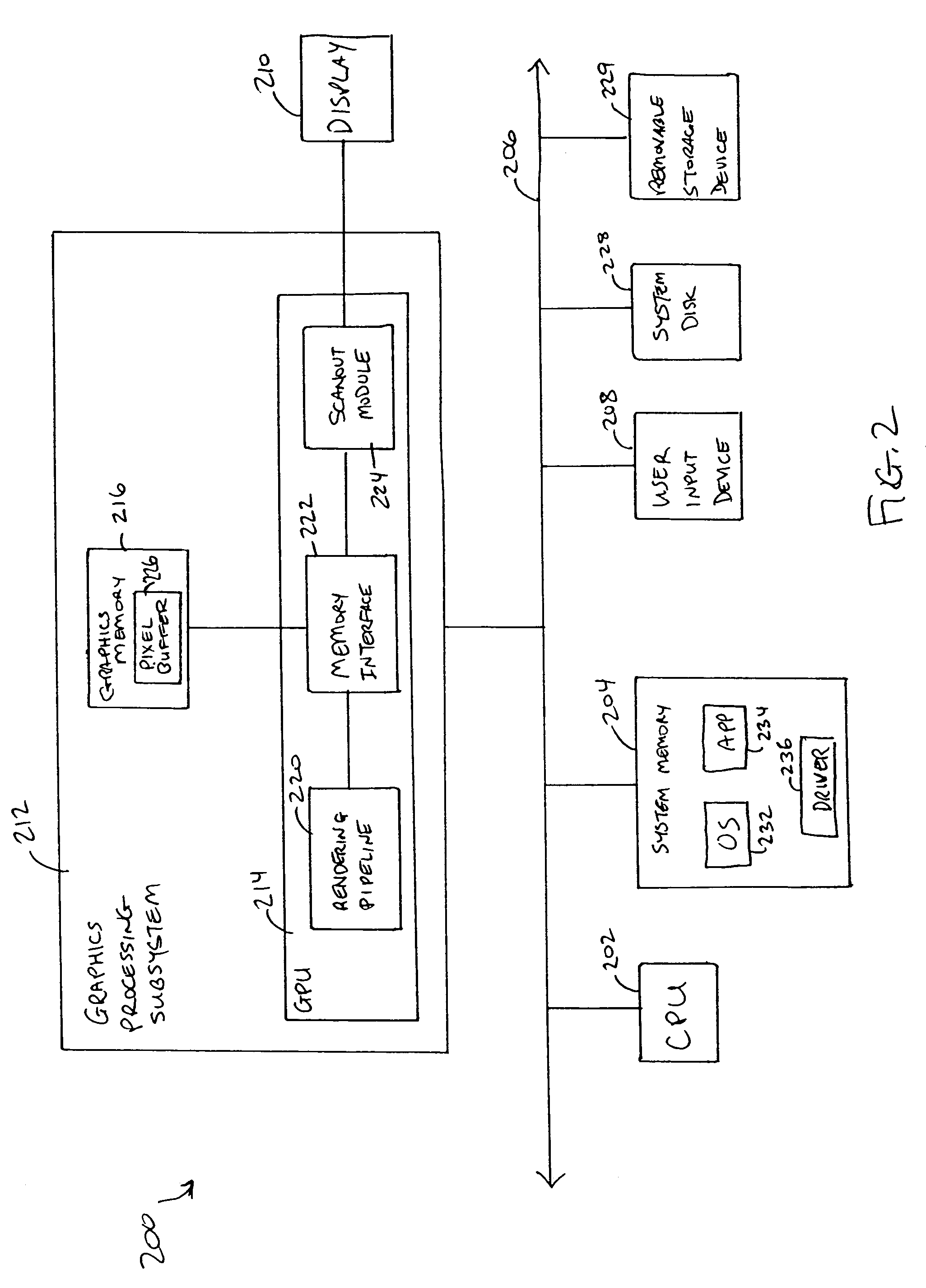Diamond culling of small primitives
a technology of primitives and diamonds, applied in the field of diamond culling of small primitives, can solve the problems of limiting rendering speed, large number of primitives, and inability to meet the optimal center coverage rul
- Summary
- Abstract
- Description
- Claims
- Application Information
AI Technical Summary
Benefits of technology
Problems solved by technology
Method used
Image
Examples
Embodiment Construction
[0025]Embodiments of the present invention provide devices and methods for culling small primitives that do not cover (or hit) any pixels during pixel generation, based on boundaries defined around pixel centers that divide the pixel raster into internal regions and external regions, with each region being assigned a unique canonical identifier. Each vertex of a primitive is assigned the canonical identifier corresponding to the region in which that vertex is located, and culling rules are defined with reference to the canonical coordinates of the vertices. Small lines and polygons can be culled based on the canonical location identifiers of their vertices. Such culling may occur at any point after screen locations of the vertices have been determined. Culling is advantageously implemented in a graphics rendering pipeline, which may be integrated into a graphics processor of a computer system.
[0026]FIG. 2 is a block diagram of a computer system 200 according to an embodiment of the ...
PUM
 Login to View More
Login to View More Abstract
Description
Claims
Application Information
 Login to View More
Login to View More - R&D
- Intellectual Property
- Life Sciences
- Materials
- Tech Scout
- Unparalleled Data Quality
- Higher Quality Content
- 60% Fewer Hallucinations
Browse by: Latest US Patents, China's latest patents, Technical Efficacy Thesaurus, Application Domain, Technology Topic, Popular Technical Reports.
© 2025 PatSnap. All rights reserved.Legal|Privacy policy|Modern Slavery Act Transparency Statement|Sitemap|About US| Contact US: help@patsnap.com



